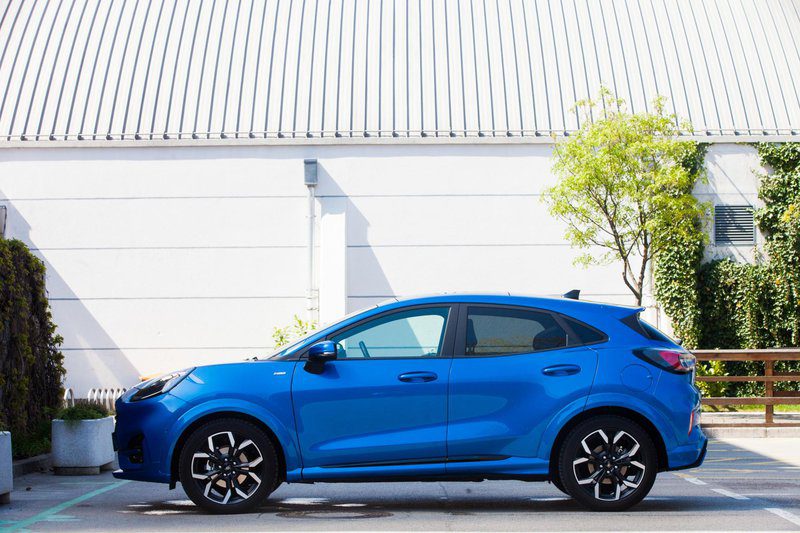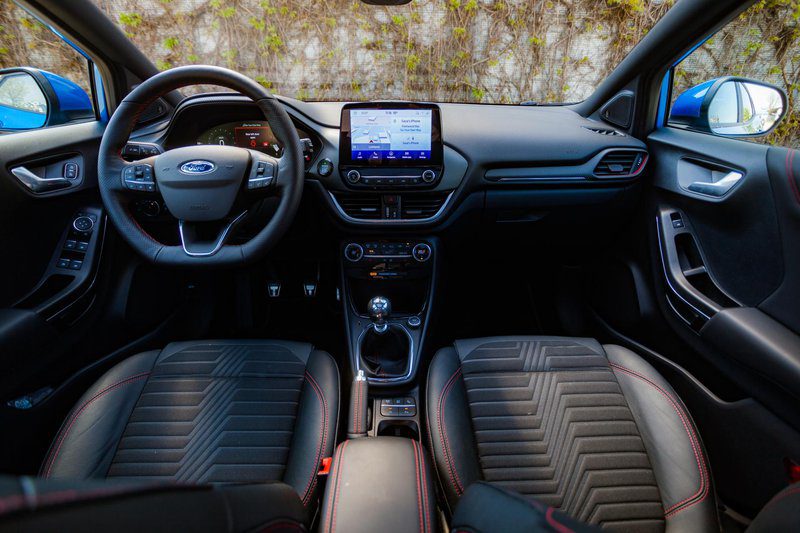
Test: Ford Puma 1.0 EcoBoost Hybrid (114 kW) ST-Line X (2020) // Puma changes hair, but not nature
Content
Since everyone immediately understands the differences between Puma, we'll touch on the general points first. Begin: both Puma, the original 1997 model, and today's Puma (second generation, if you will) are based on the Fiesta platform.... The first in the fourth generation, the second in the seventh generation. Both share common design features, both generations offer (at least for now) only gasoline engines, and, above all, they have excellent driving dynamics. Tracking is perhaps the best thing.
But let's start in order. It's hard for us to blame Ford for bringing another crossover to market. Clearly they felt the demand for a model that shares custom performance with the EcoSport (comparable in size) but still has a little more design, driving forces and emotional sparks, and at the same time serves as a good starting point for the introduction of future new ones. drive technology. ...
As a reminder, the Puma was first unveiled at the Ford "Go Further" conference in Amsterdam, which in a sense reflected the future of Ford and its aspiration to become fully electrified one day.

At the same time, the base of Puma is the seventh generation Fiesta. But since the Puma is almost 15 centimeters longer (4.186 mm) and has a nearly 10 centimeters longer wheelbase (2.588 mm), there are few parallels, at least in terms of roominess. They are also not similar in design.
Puma brought some design similarities to its predecessor with the elongated front LED lights, and you could say that the bulky mask and the mentioned lights give the impression of a sad frog, but the fact is that the photos are doing it a disservice, since the living car is much more compact, more consistent. and is similar in design. The sideline and rear are much more dynamic, but this is not reflected in the lack of space in the rear seat or trunk.
The Puma is anything but a typical crossover, because in addition to ease of use, it also puts driving dynamics at the forefront.
More, With 456 liters of space, it is one of the largest in its class and also offers some great custom solutions.... One of the most interesting is definitely the recessed bottom, which is surrounded by durable plastic and has a drain plug that makes cleaning easy. So, for example, we can put our boots there for hiking in the mud, and then rinse the body with water without remorse. Or even better: at a picnic we fill it with ice, "bury" the drink inside, and after the picnic we just open the cork below.

Well, if the exterior doesn't at all resemble the Fiesta that Puma grew up on, we can't say the same for the interior architecture. Most of the elements are very familiar, which means that you will have no problems with ergonomics and getting used to it. The biggest novelty is the new 12,3-inch digital meters, which replace the classic analog meters in more equipped Puma versions.
Since the screen is 24-bit, this means that it can display more expressive and accurate colors, therefore, the user experience is all the more interesting. The set of graphics also varies, as the graphics of the sensors change each time the driving program changes. The second screen, the middle one, is more familiar to us.
It's an 8-inch touchscreen that hides Ford's graphically familiar infotainment interface, but it's slightly redesigned in the new generation as it also offers some features we didn't know about before. Among other things, it can now connect to the Internet via a wireless Internet network.
As I said, she was The new Puma was also created to make buyers recognize it as an advanced car to use. The interior is quite well adapted for this. Apart from the many storage compartments (especially in front of the gearbox designed for mobile phones, as it is tilted, surrounded by soft rubber and allows wireless charging), there is also ample space in all directions. They have not forgotten about practicality: the seat covers are removable, they are completely easy to wash and reinstall.

But let's touch on what Puma stands out the most - driving dynamics. But before we get into the corners, the test car was powered by the most powerful (155 "horsepower") engine available on a Puma. The set can also be named because the liter three-cylinder engine in the nose is a little helped by electricity. The 48-volt hybrid system is more of a concern for some electricity consumers, but it also contributes to improved efficiency and, as a result, lower fuel consumption.
Power is sent to the wheels through an excellent and precise six-speed gearbox, which is currently the only choice in Puma as an automatic transmission is not available, but this is expected to change soon. As stated, the Puma shines in corners. The Fiesta's excellent base certainly helps with this, but interestingly, the higher seating position does not undermine the dynamics in the least. What's more, this combination provides an excellent compromise as the Puma can also be a comfortable and unpretentious car.
But when you choose to attack corners, it will do so with determination and with plenty of feedback that rewards the driver with confidence-inspiring feelings. The chassis is neutral, the weight is evenly distributed, the steering wheel is accurate enough, the engine is brisk enough, and the transmission is well-obedient. These are all good enough reasons for the Puma to match any "regular" sedan in corners.

Moreover, I would dare to mow even in some more sporty car. From here, the Fords had the guts to name it after a former model that was anything but a crossover. And more, Cougar was even sent to the Ford Performance departmentSo in the near future, we can also expect an ST version that shares propulsion technology with the Fiesta ST (ie, a 1,5-liter turbocharged three-cylinder with nearly 200 "horsepower").
We need to give Puma a chance: in real life, she looks much more coherent and prettier than in photographs.
If we only learned about the new Puma from dry technical data and didn't give it a chance to convince you that you're alive (let alone driving), then Fords could easily be blamed for choosing a name that was once wholly owned by the crossover. . automobile. But the Puma is much more than just a car that is raised to make it easier for older people to get into the car. It's a crossover that happily rewards drivers who want more performance, but at the same time demand some everyday convenience from the car. It's a well thought out product, so don't worry that the "rework" of the Puma name is well thought out.
Ford Puma 1.0 EcoBoost Hybrid (114 kW) ST-Line X (2020)
Basic data
| Sales: | Summit motors ljubljana |
|---|---|
| Test model cost: | 32.380 € |
| Base model price with discounts: | 25.530 € |
| Test model price discount: | 30.880 € |
| Power: | 114kW (155 KM) |
| Acceleration (0-100 km / h): | 9,0 with |
| Maximum speed: | 205 km / h |
| Mixed flow ECE: | 5,6l / 100km |
Cost (up to 100.000 km or five years)
| Regular services, works, materials: | 724 € |
|---|---|
| Fuel: | 5.600 XNUMX € |
| Tires (1) | 1.145 XNUMX € |
| Loss of value (within 5 years): | 19.580 XNUMX € |
| Compulsory insurance: | 2.855 € |
| CASCO INSURANCE (+ B, K), AO, AO + | 5.500 XNUMX ( |
| Calculate the cost of auto insurance | |
| Buy up | € 35.404 0,35 (km cost: XNUMX) €) |
Technical information
| engine: | 3-cylinder - 4-stroke - in-line - turbocharged petrol - front transverse mounted - bore and stroke 71,9 x 82 mm - displacement 999 cm3 - compression ratio 10:1 - maximum power 114 kW (155 hp) ) at 6.000 rpm - average piston speed at maximum power 16,4 m / s - specific power 114,1 kW / l (155,2 l. injection. |
|---|---|
| Energy transfer: | the engine drives the front wheels - 6-speed manual transmission - gear ratio I. 3.417; II. 1.958 1.276 hours; III. 0.943 hours; IV. 0.757; V. 0,634; VI. 4.580 – differential 8,0 – rims 18 J × 215 – tires 50/18 R 2,03 V, rolling circumference XNUMX m. |
| Capacity: | top speed 205 km/h – 0-100 km/h acceleration 9,0 s – average fuel consumption (ECE) 4,4 l/100 km, CO2 emissions 99 g/km. |
| Transportation and suspension: | crossover - 5 doors, 5 seats - self-supporting body - front single suspension, spring legs, three-spoke cross rails, stabilizer - rear multi-link axle, coil springs, telescopic shock absorbers, stabilizer - front disc brakes (forced cooling), rear discs, ABS, electric parking brake on the rear wheels (switching between seats) - steering wheel with rack and pinion, electric power steering, 2,6 turns between extreme points. |
| Mass: | empty vehicle 1.205 kg - Permissible total weight 1.760 kg - Permissible trailer weight with brake: 1.100 kg, without brake: 640 kg - Permissible roof load: np |
| External dimensions: | length 4.186 mm - width 1.805 mm, with mirrors 1.930 mm - height 1.554 mm - wheelbase 2.588 mm - front track 1.526 mm - 1.521 mm - driving radius 10,5 m. |
| Inner dimensions: | longitudinal front 880-1.100 mm, rear 580-840 mm - front width 1.400 mm, rear 1.400 mm - head height front 870-950 mm, rear 860 mm - front seat length 520 mm, rear seat 450 mm - steering wheel ring diameter 370 mm - fuel tank 452 l. |
| Box: | 401-1.161 l |
Overall rating (417/600)
Ford has managed to combine two characteristics that are difficult to combine: perfection for the user and driving dynamics. Because of the latter, it certainly inherited its name from its predecessor, which was anything but the all-rounder, which is undoubtedly a novelty.
Cab and trunk (82/110)
The Puma is as big as the Fiesta, so its cockpit offers ample room in all directions. The large and comfortable boot is to be commended.
Comfort (74
/ 115)While the Puma is driver-focused, it also lacks comfort. The seats are good, the materials and workmanship are of high quality.
Transmission (56
/ 80)At Ford, we have always been able to rely on advanced drive technology and Puma is no different.
Driving performance (74
/ 100)Among crossovers, it is difficult to surpass it in terms of driving performance. Undoubtedly, this is where the initiative to revive the Puma name arose.
Security (80/115)
An excellent Euro NCAP score and a good supply of auxiliary systems means a good score.
Economy and environment (51
/ 80)The most powerful three-liter motor can sleep a little, but at the same time, if you are gentle, it will reward you with low consumption.
We praise and reproach
Driving dynamics
Drive technology
Custom solutions
Digital counters
Deepened trunk bottom
Insufficient exterior mirrors
Sitting too high